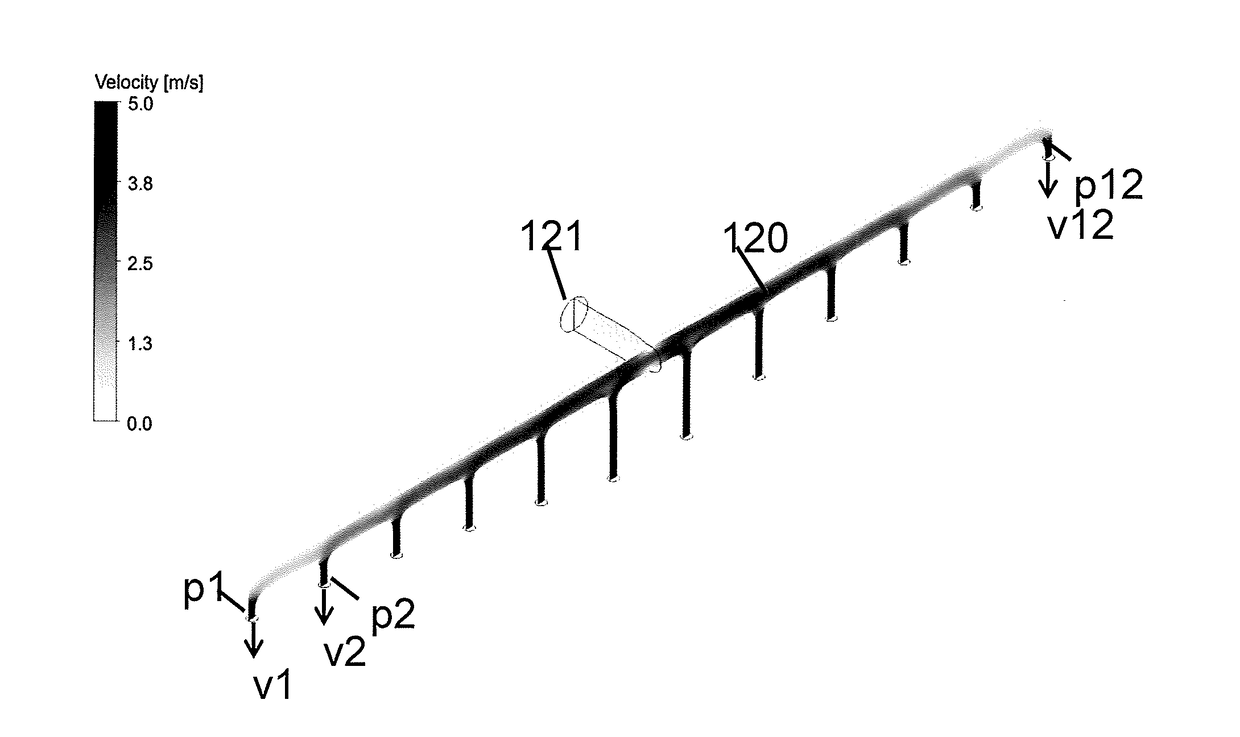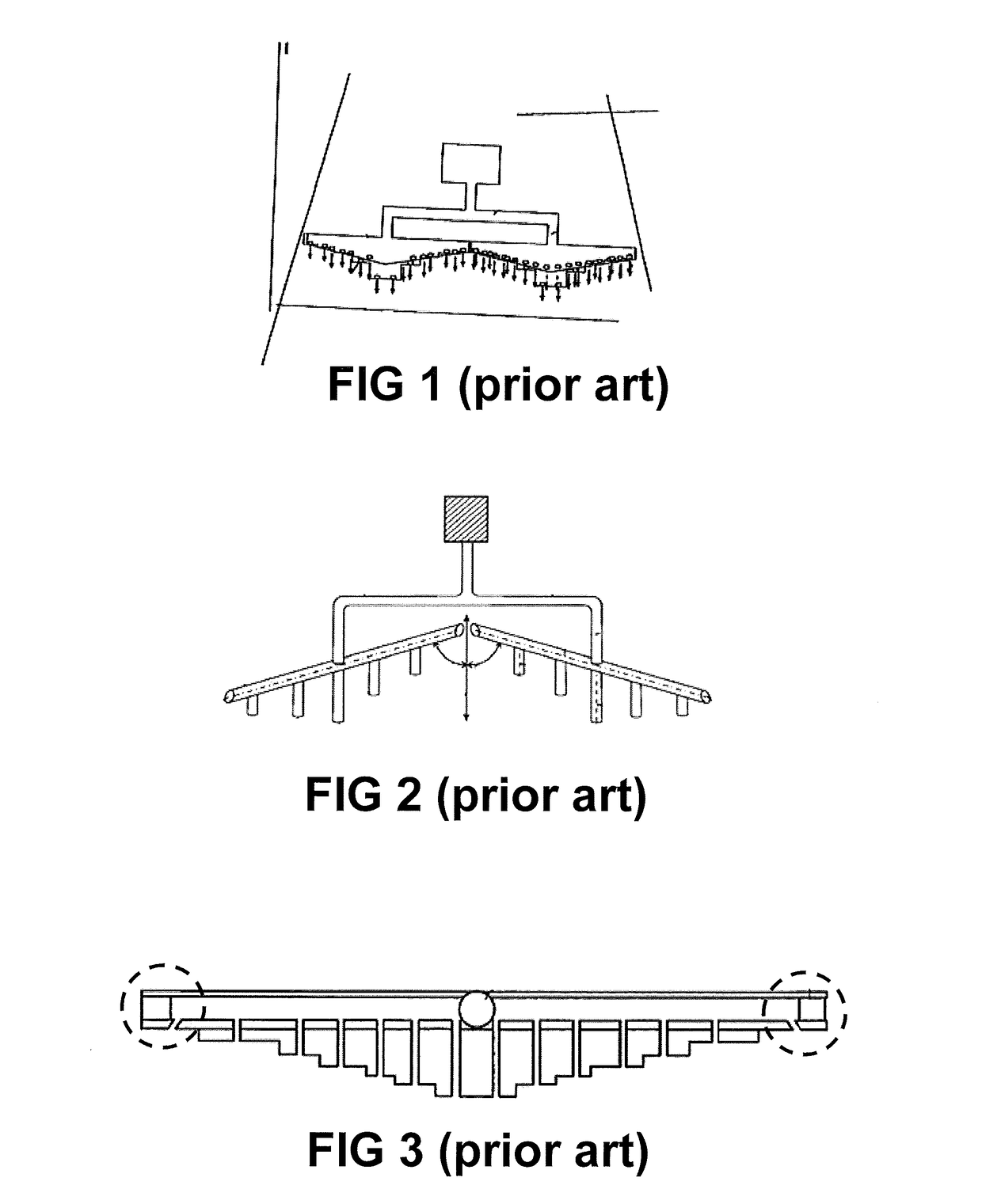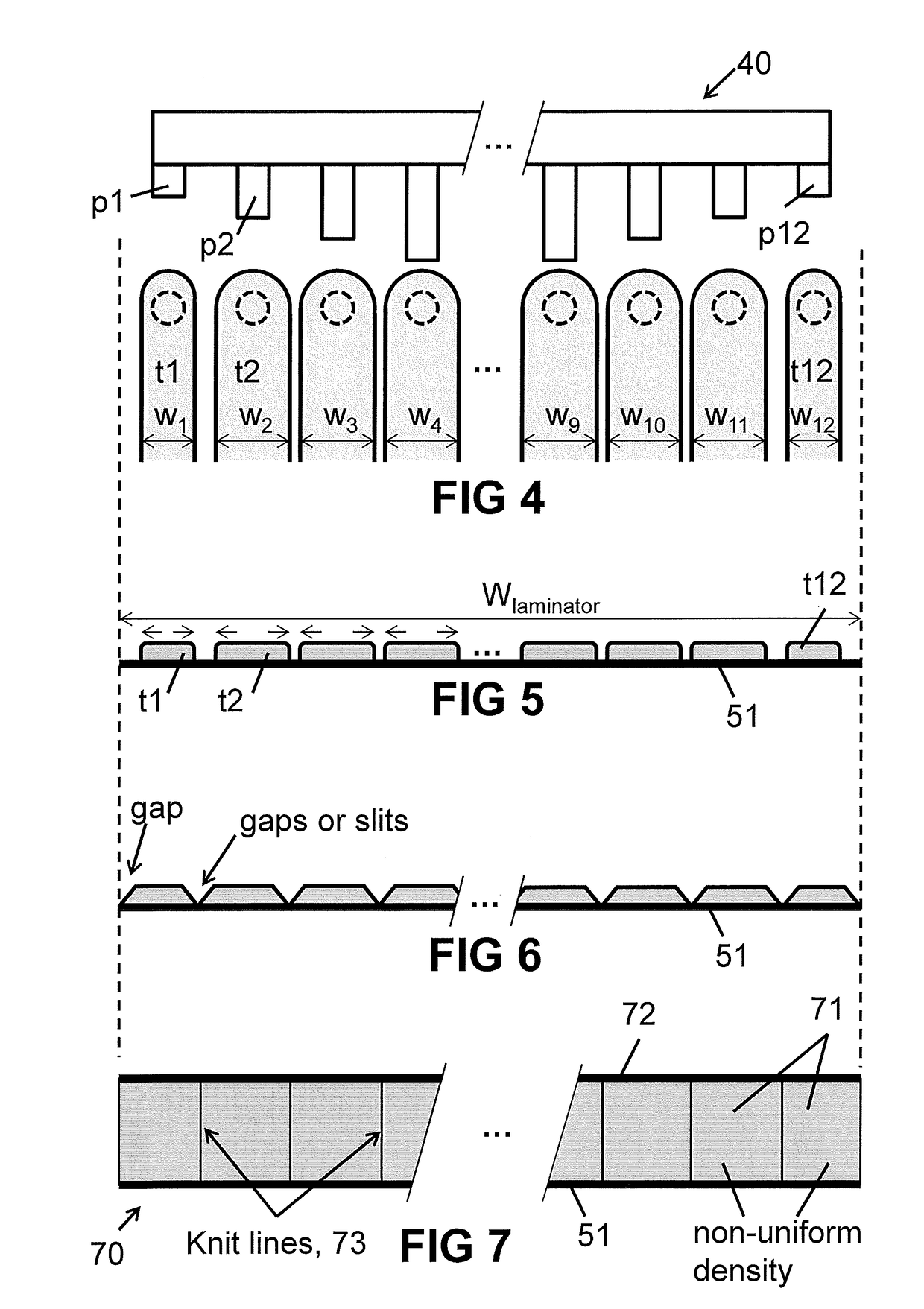Method of designing and manufacturing a distributor bar for applying a viscous foamable liquid mixture onto a laminator
a technology of foamable liquid and distributor bars, which is applied in the direction of process and machine control, chemical/physical processes, program control, etc., can solve the problems of multi-dimensional problems that cannot be easily solved without undue burden, and the application gives no guidance about potential problems, etc., to achieve high speed, high reactivity, and the effect of reducing the burden
- Summary
- Abstract
- Description
- Claims
- Application Information
AI Technical Summary
Benefits of technology
Problems solved by technology
Method used
Image
Examples
first embodiment
[0182]FIG. 21 to FIG. 26 illustrate several examples of a first embodiment of a distributor bar according to the present invention, dedicated for particular production-lines.
[0183]The geometry of the distributor bar 210, 230, 240, 250, 260 of the first embodiment is chosen to have an inner space 5 (or “main channel”) with a substantially straight center line 6 (in its longitudinal direction). The inner space 5 of the distributor bar is tapering towards its outer ends (excluding the exit pipes, which have a constant inner diameter Dhole), whereby the inner diameter decreases (e.g. linearly) from a first value Ddev near the inlet to a second value α.Ddev at the outer ends (left and right in FIG. 22), where a is a constant value chosen in the range from 0.50 to 0.95, preferably in the range from 0.60 to 0.95, more preferably in the range of 0.75 to 0.80. The main reason for reduction of Ddev to αDdev is to reduce residence time and maintain a minimum speed to mitigate against fouling. ...
example 1
[0230]The following parameters of the production line are given:
[0231]Qtotal=3.6×10−4 m3 / s
[0232]Wpanel=1.0 m
[0233]n(fluid)=0.9
[0234]Vline=15 m / min
[0235]Using steps (a) to (h) of the design method described above, the following set of parameters of a distributor bar 230 according to an embodiment of the present invention, shown in FIG. 23, were chosen or calculated:
[0236]Ndev=2
[0237]Nholes=12×2=24
[0238]Ddev=8.0×10−3 m
[0239]Dhole=2.4×10−3 m
[0240]α=0.8
[0241]tdev=0.11 s
[0242]Vexit=3.3 m / s
[0243]W=0.21 m
[0244]K=3.7×10−2 m
[0245]These values can then be used for starting the simulations and iterations, and for calculating the lengths of the exit pipes.
[0246]It is pointed out that there is no unique solution for this production-line, and other solutions for this same production-line may also be possible, as explained above, and as can be appreciated by the steps of the proposed design method. For example if Ddev is chosen slightly smaller, say e.g. equal to about 7.0×10−3 m, then a completel...
example 2
[0249]In a second example, the following parameters of the production line are given:
[0250]Qtotal=4.7×10−4 m3 / s, Wpanel=1.2 m, Vline=20 m / min, n(fluid)=0.9.
[0251]And a possible solution obtainable via the design method described above would be:
[0252]Ndev=2, Nholes=16×2=32, Ddev=8.5×10 3 m, Dhole=2.3×10−3 m,
[0253]α=0.8, tdev=0.12 s, Vexit=3.5 m / s, W=0.26 m, K=41×10−3 m.
[0254]Again, these values can then be used for starting the simulations, and for calculating the lengths of the exit pipes. This distribution bar 240 is illustrated in FIG. 24.
PUM
| Property | Measurement | Unit |
|---|---|---|
| exit velocities | aaaaa | aaaaa |
| residence time | aaaaa | aaaaa |
| speed | aaaaa | aaaaa |
Abstract
Description
Claims
Application Information
 Login to View More
Login to View More - R&D
- Intellectual Property
- Life Sciences
- Materials
- Tech Scout
- Unparalleled Data Quality
- Higher Quality Content
- 60% Fewer Hallucinations
Browse by: Latest US Patents, China's latest patents, Technical Efficacy Thesaurus, Application Domain, Technology Topic, Popular Technical Reports.
© 2025 PatSnap. All rights reserved.Legal|Privacy policy|Modern Slavery Act Transparency Statement|Sitemap|About US| Contact US: help@patsnap.com



